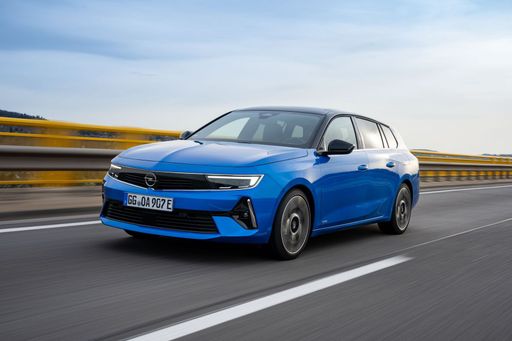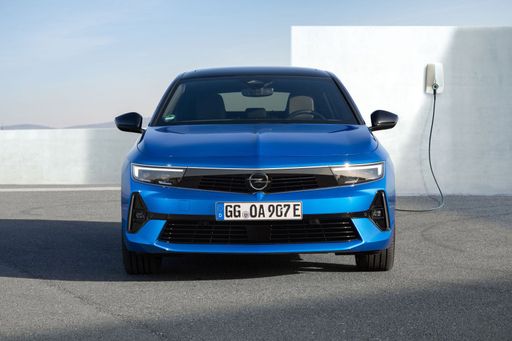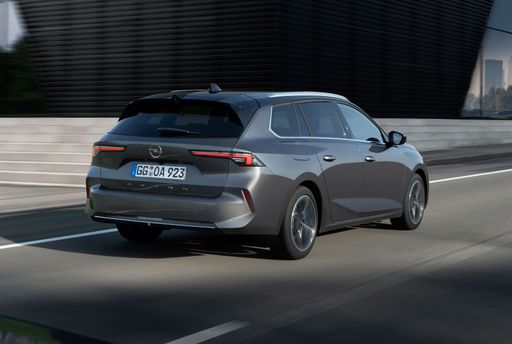Ford Puma vs Vauxhall Astra Sports Tourer - Differences and prices compared
Compare performance (168 HP vs 225 HP), boot space and price (24800 £ vs 26500 £) at a glance. Find out which car is the better choice for you – Ford Puma or Vauxhall Astra Sports Tourer?
Costs and Efficiency:
Price and efficiency are key factors when choosing a car – and this is often where the real differences emerge.
Ford Puma has a minimal advantage in terms of price – it starts at 24800 £, while the Vauxhall Astra Sports Tourer costs 26500 £. That’s a price difference of around 1706 £.
Fuel consumption also shows a difference: Vauxhall Astra Sports Tourer manages with 2.30 L and is therefore clearly more efficient than the Ford Puma with 5.40 L. The difference is about 3.10 L per 100 km.
In terms of energy consumption, the advantage goes to the Ford Puma: with 13.10 kWh per 100 km, it’s slightly more efficient than the Vauxhall Astra Sports Tourer with 15.60 kWh. That’s a difference of about 2.50 kWh.
As for range, the Vauxhall Astra Sports Tourer performs minimal better – achieving up to 413 km, about 37 km more than the Ford Puma.
Engine and Performance:
Under the bonnet, it becomes clear which model is tuned for sportiness and which one takes the lead when you hit the accelerator.
When it comes to engine power, the Vauxhall Astra Sports Tourer has a evident edge – offering 225 HP compared to 168 HP. That’s roughly 57 HP more horsepower.
In acceleration from 0 to 100 km/h, the Ford Puma is barely noticeable quicker – completing the sprint in 7.40 s, while the Vauxhall Astra Sports Tourer takes 7.60 s. That’s about 0.20 s faster.
In terms of top speed, the Vauxhall Astra Sports Tourer performs somewhat better – reaching 235 km/h, while the Ford Puma tops out at 210 km/h. The difference is around 25 km/h.
There’s also a difference in torque: Vauxhall Astra Sports Tourer pulls to a small extent stronger with 360 Nm compared to 290 Nm. That’s about 70 Nm difference.
Space and Everyday Use:
Cabin size, boot volume and payload all play a role in everyday practicality. Here, comfort and flexibility make the difference.
Seats: offers more seating capacity – vs .
In curb weight, Ford Puma is barely noticeable lighter – 1316 kg compared to 1394 kg. The difference is around 78 kg.
In terms of boot space, the Vauxhall Astra Sports Tourer offers slightly more room – 597 L compared to 523 L. That’s a difference of about 74 L.
In maximum load capacity, the Vauxhall Astra Sports Tourer performs distinct better – up to 1634 L, which is about 351 L more than the Ford Puma.
When it comes to payload, Vauxhall Astra Sports Tourer barely noticeable takes the win – 497 kg compared to 469 kg. That’s a difference of about 28 kg.
Who comes out on top?
Overall, the Vauxhall Astra Sports Tourer shows itself to be outperforms in nearly all aspects and secures the title of DriveDuel Champion.
It convinces with the more balanced overall package and proves to be the more versatile choice for everyday use.
 @ Opel / Stellantis Media
@ Opel / Stellantis Media
Vauxhall Astra Sports Tourer
Costs and Consumption
View detailed analysis
Engine and Performance
View detailed analysis
Dimensions and Body
View detailed analysis
Ford Puma
The Ford Puma is a cheeky compact crossover that blends sporty styling with city-friendly practicality, giving drivers a surprisingly fun and composed ride. With clever storage tricks and a lively personality, it’s a smart pick for buyers who want enjoyment without fuss.
details @ Ford Motor Company / Ford Media Center
@ Ford Motor Company / Ford Media Center
 @ Ford Motor Company / Ford Media Center
@ Ford Motor Company / Ford Media Center
 @ Ford Motor Company / Ford Media Center
@ Ford Motor Company / Ford Media Center
 @ Ford Motor Company / Ford Media Center
@ Ford Motor Company / Ford Media Center
Vauxhall Astra Sports Tourer
The Opel Astra Sports Tourer blends family-friendly practicality with a sleek, grown-up wagon silhouette that manages to be both useful and unexpectedly stylish. It’s an easy car to live with — comfortable, well put together and clever with space — a sensible choice for buyers who want everyday versatility without fuss.
details @ Opel / Stellantis Media
@ Opel / Stellantis Media
 @ Opel / Stellantis Media
@ Opel / Stellantis Media
 @ Opel / Stellantis Media
@ Opel / Stellantis Media
 @ Ford Motor Company / Ford Media Center
@ Ford Motor Company / Ford Media Center
|
 @ Opel / Stellantis Media
@ Opel / Stellantis Media
|
|
|
|
Costs and Consumption |
|
|---|---|
|
Price
24800 - 36300 £
|
Price
26500 - 41800 £
|
|
Consumption L/100km
5.4 - 5.9 L
|
Consumption L/100km
2.3 - 6.1 L
|
|
Consumption kWh/100km
13.1 - 13.9 kWh
|
Consumption kWh/100km
15.60 kWh
|
|
Electric Range
361 - 376 km
|
Electric Range
81 - 413 km
|
|
Battery Capacity
43 kWh
|
Battery Capacity
51 kWh
|
|
co2
0 - 135 g/km
|
co2
0 - 137 g/km
|
|
Fuel tank capacity
42 L
|
Fuel tank capacity
42 - 52 L
|
Dimensions and Body |
|
|---|---|
|
Body Type
SUV
|
Body Type
Estate
|
|
Seats
5
|
Seats
5
|
|
Doors
5
|
Doors
5
|
|
Curb weight
1316 - 1563 kg
|
Curb weight
1394 - 1760 kg
|
|
Trunk capacity
456 - 523 L
|
Trunk capacity
516 - 597 L
|
|
Length
4186 - 4226 mm
|
Length
4642 mm
|
|
Width
1805 mm
|
Width
1860 mm
|
|
Height
1550 - 1555 mm
|
Height
1443 - 1481 mm
|
|
Max trunk capacity
1216 - 1283 L
|
Max trunk capacity
1553 - 1634 L
|
|
Payload
367 - 469 kg
|
Payload
413 - 497 kg
|
Engine and Performance |
|
|---|---|
|
Engine Type
Electric, Petrol MHEV
|
Engine Type
Petrol, Diesel, Electric, Petrol MHEV, Plugin Hybrid
|
|
Transmission
Automatic, Manuel
|
Transmission
Manuel, Automatic
|
|
Transmission Detail
Reduction Gearbox, Manual Gearbox, Dual-Clutch Automatic
|
Transmission Detail
Manual Gearbox, Automatic Gearbox, Reduction Gearbox, Dual-Clutch Automatic
|
|
Drive Type
Front-Wheel Drive
|
Drive Type
Front-Wheel Drive
|
|
Power HP
125 - 168 HP
|
Power HP
130 - 225 HP
|
|
Acceleration 0-100km/h
7.4 - 9.8 s
|
Acceleration 0-100km/h
7.6 - 11 s
|
|
Max Speed
160 - 210 km/h
|
Max Speed
170 - 235 km/h
|
|
Torque
170 - 290 Nm
|
Torque
230 - 360 Nm
|
|
Number of Cylinders
3
|
Number of Cylinders
3 - 4
|
|
Power kW
92 - 124 kW
|
Power kW
96 - 165 kW
|
|
Engine capacity
999 cm3
|
Engine capacity
1199 - 1598 cm3
|
General |
|
|---|---|
|
Model Year
2025
|
Model Year
2023 - 2025
|
|
CO2 Efficiency Class
A, D
|
CO2 Efficiency Class
D, E, A, C, B
|
|
Brand
Ford
|
Brand
Vauxhall
|
Is the Ford Puma offered with different drivetrains?
The Ford Puma is offered with Front-Wheel Drive.
The prices and data displayed are estimates based on German list prices and may vary by country. This information is not legally binding.
